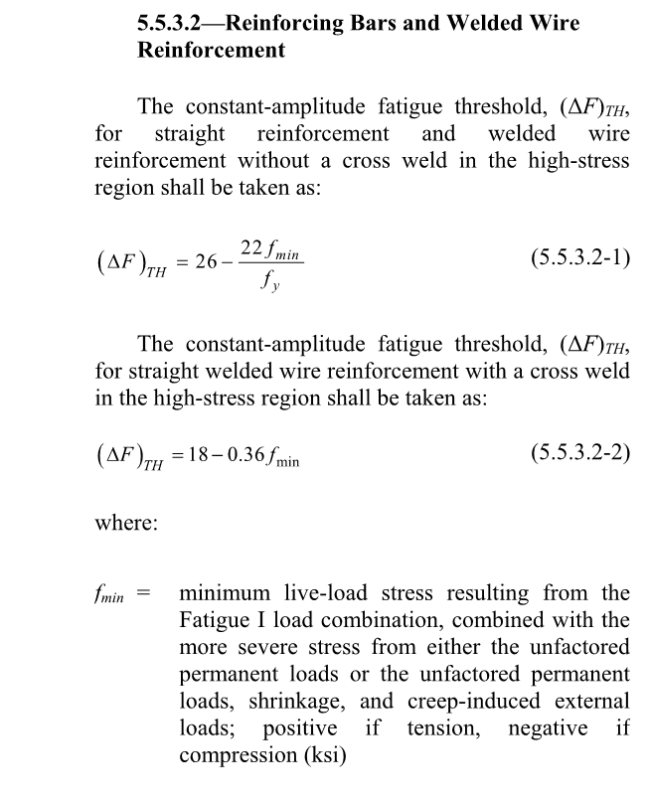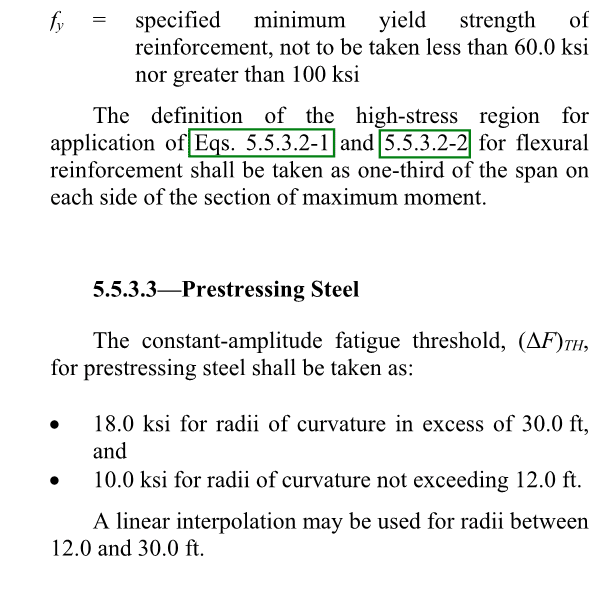Quade999
Civil/Environmental
- May 29, 2020
- 61
Hi Everyone,
AASHTO doesn't seem to specify the allowable fatigue stress range on a lap spliced section. They only provide information for straight reinforcing bars, prestress tendons, and welded or mechanical splices. See screengrabs below. So my assumption is that a section with lap splices can be treated as a section containing continuous straight reinforcing bars for the purpose of fatigue stress checks. Is this correct?



Thanks
AASHTO doesn't seem to specify the allowable fatigue stress range on a lap spliced section. They only provide information for straight reinforcing bars, prestress tendons, and welded or mechanical splices. See screengrabs below. So my assumption is that a section with lap splices can be treated as a section containing continuous straight reinforcing bars for the purpose of fatigue stress checks. Is this correct?



Thanks
